5 Surprising Truths About Modernizing Your Phone System
That old desk phone is more than a piece of hardware—it’s a window into the past. Here's a deeper look at what it truly means to modernize your communications in the age of AI.

1. AI Is Already Here, and It’s Your New Communications Assistant
Upgrading your phone system is no longer about just getting dial tone in the cloud. Modern Unified Communications as a Service (UCaaS) platforms have moved far beyond basic automation and are now deeply integrated with powerful Artificial Intelligence that provides an almost immediate and tangible return on investment.
These aren't futuristic concepts; they are practical, impactful applications available right now. Today’s platforms can provide:
Real-time transcription of both voice and video calls, creating a searchable record of every conversation.
Automated post-meeting summaries that extract key discussion points and action items, eliminating the need for manual note-taking.
Real-time agent assistance and coaching during live calls, offering suggestions and pulling information from knowledge bases to improve service quality on the fly.
Sentiment analysis to gauge customer mood during an interaction, allowing for proactive service adjustments.
Specialized Clinical AI Note-Taking for healthcare environments, which can be trained to intelligently draft notes that meet specific service line needs and formats.
What makes this so impactful is the speed of deployment. These sophisticated AI tools can often be fully trained and customized in 90 days or less, delivering a powerful boost right out of the gate. For organizations focused on service, these capabilities directly translate into a better patient experience and dramatically increased operational efficiency.
2. The Real Power Isn't the Phone—It's the Platform
The most compelling advantage of modernizing isn't a single feature; it's the power of consolidation. Businesses are moving away from a fragmented environment of disparate systems—one for phones, another for video, a third for internal chat, and maybe a fourth for telehealth—to a single, unified platform.
This consolidated approach offers significant strategic and operational benefits:
Simplified management and reduced IT burden: A single, centralized administrative portal drastically reduces the time IT teams spend on maintenance, updates, and troubleshooting.
Cost efficiency and predictable spending: Moving to a subscription-based OpEx model eliminates surprise hardware costs and maintenance contracts, making budgets more predictable.
A seamless user experience: Employees use one intuitive application for all communication channels, reducing friction and encouraging the adoption of powerful collaboration tools.
Enhanced data visibility: Bringing all communication data into one place provides a holistic view of interactions, enabling comprehensive analytics that are impossible with siloed systems.
Improved security and compliance posture: A unified, cloud-native platform simplifies the management of security policies and ensures consistent compliance (e.g., HIPAA) across all communication types.
The real value will be unlocked through the unification of these core voice services with other essential communication and collaboration channels, paving the way for truly integrated workflows, enhanced productivity, and a more agile enterprise.
3. Think Twice Before Going "All-In" on Microsoft Teams for Voice
Since so many organizations already rely on Microsoft Teams for internal chat and meetings, moving voice services there seems like a logical next step. It feels simple and consolidated. However, far too often we see this as just a knee-jerk reaction and little thought or effort to truely consider options. Our advisers suggest caution before committing 100% to Microsoft for telephony. While Teams is a phenomenal collaboration tool, specialized UCaaS providers—the "phone-people"—often deliver a more robust and resilient voice experience.
Here are the key reasons to be cautious of an "all-in" Microsoft voice strategy:
Vendor Lock-in: Relying on a single vendor for email, productivity, chat, and voice creates a single point of failure. If that vendor has an issue with their voice services, you have no alternative.
Limited Advanced Functionality: Compared to dedicated UCaaS providers, Teams' native phone system can be limited in areas like complex call routing, deep call analytics, and native contact center tools needed for receptionist groups or service teams.
Hardware Requirements: An all-Teams approach often requires specific "Certified for Microsoft Teams" hardware. This can limit your flexibility to use universal SIP devices and may increase costs by forcing you to buy new, Teams-specific phones and headsets.
A more strategic approach is to integrate Teams with a specialized UCaaS provider. This gives your organization the best of both worlds: the familiar Teams interface that employees already know, combined with the advanced, reliable voice and contact center capabilities of a dedicated communications platform.
You can edit text on your website by double clicking on a text box on your website. Alternatively, when you select a text box a settings menu will appear. your website by double clicking on a text box on your website. Alternatively, when you select a text box
4. You're Probably Buying Technology the Hard Way
The traditional technology sourcing process is exhausting. It involves identifying potential vendors, sitting through dozens of sales pitches, repeating your requirements in countless meetings, and trying to make sense of wildly different proposals. This "vendor fatigue" is a major drain on time and resources.
There is a more efficient model: partnering with a vendor-neutral technology agent or sourcing expert. These experts work as an extension of your team, not as a reseller for a specific provider. Their role is to streamline the entire buying process:
They are impartial, unbiased, and vendor-agnostic, ensuring their recommendations are based solely on your needs.
They vet hundreds of suppliers to build a curated portfolio of best-in-class providers, so you don't have to.
They manage the bidders, facilitate demonstrations, and translate industry jargon, removing vendor fatigue.
They leverage their collective buying power to secure better pricing and contract terms than you could likely get on your own.
This is a powerful shift because it reduces risk, saves an enormous amount of time, and provides the clarity and confidence needed to navigate a complex market.
You can edit text on your website by double clicking on a text box on your website. Alternatively, when you select a text box a settings menu will appear. your website by double clicking on a text box on your website. Alternatively, when you select a text box
5. It’s Not an Expense, It’s a Transformation
Viewing a communications upgrade as a simple capital or even operating expense is a mistake. It is a strategic business transformation. The classic story, almost a cliche at this point, of the mid-sized healthcare provider replacing a 20-year-old phone system, illustrates this perfectly.
For them, the goal wasn't just to replace aging hardware or shift from a CAPEX to a predictable OPEX model; it was about fundamentally improving how they operate and serve patients.
A modern platform enables truly transformative outcomes that go far beyond a basic dial tone:
Enhanced Collaboration: Empowering employees to communicate seamlessly with integrated voice, video, and messaging, whether they are in the office, working remotely, or moving freely within a facility.
Improved Agility: The ability to instantly scale the system to meet new demands, add users in minutes, or open new locations without a massive IT project.
Superior Reliability: Leveraging the geographically distributed infrastructure of the cloud provides unmatched business continuity and disaster recovery, ensuring communications stay up even if a local office goes down.
A Better Patient Experience: Using tools like intelligent call routing to connect patients to the right department faster, and queue callback options to eliminate frustrating hold times, fundamentally improving how patients access care.
The agility gained is profound. As Huw Fielding of Southampton FC noted, the impact is undeniable:
“The greatest impact on our operations is certainly the speed and ease with which we can react to change. What used to take hours or more now takes seconds.”
Is Your Business Ready for Smarter Conversations?
Modernizing your business phone system is no longer about swapping one box for another. It’s about embracing AI as a productivity partner, unifying disparate tools into a single powerful platform, making strategic vendor choices that prioritize resilience over convenience, and fundamentally transforming how your organization communicates. It’s a strategic leap forward that can unlock new levels of efficiency, agility, and service quality.
Now that you've seen what's possible, what could your business achieve if every conversation was smarter?

